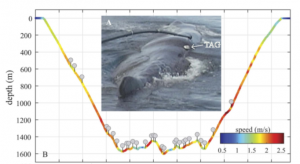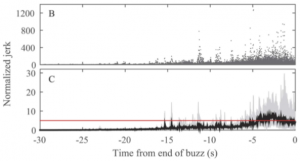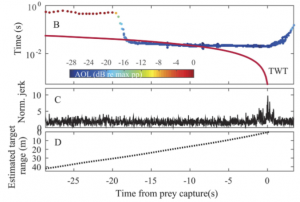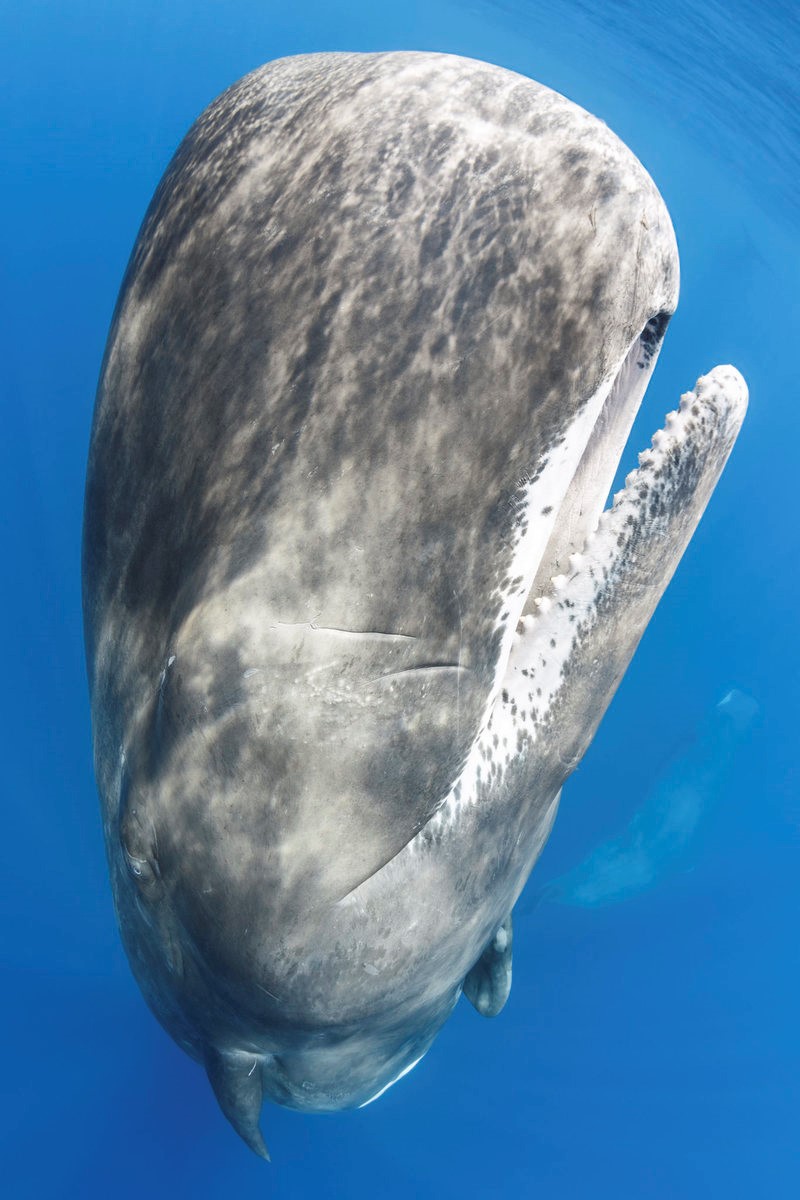Article
Fais, A., Johnson, M., Wilson, M., Soto, N. A., & Madsen, P. T. (2016). Sperm whale predator-prey interactions involve chasing and buzzing, but no acoustic stunning. Scientific reports, 6, 28562.
Background
Sperm whales (Physeter macrocephalus) are big. To put it in perspective, an adult or bull sperm whale is longer on average (52 ft.) than three average size (16 ft.) female great white sharks (Carcharodon carcharias) combined and can way over 90,000 lbs. or 45 tons. This massive bulk is why they are the largest toothed predator on the planet. In modern times, this species is recognized as the antagonist behind Herman Melville’s Moby Dick. In the past sperm whales were a crucial resource for whaling communities in New England. Despite centuries of interacting with sperm whales we know surprisingly little about this leviathan.

Scientists know that this species has a vital role in nutrient exchange in the world’s oceans and is responsible for biomass turnover equal to the collective amount of transfer caused by human fisheries each year. Researchers even know how sperm whales transport nutrients from the depths of the ocean. Sperm whales feed meso- (mid) and benthopelagic (bottom) prey and bring nutrients such as carbon and nitrogen to the surface as excrement. The result is a cycle between the surface and deep ocean that provides limiting nutrients to other species near the surface.
Scientists know that sperm whales hunt in the deep ocean with the use of echolocation or the use of sound to map the environment via a well-developed forehead region. The forehead of sperm whales has a distinct rectangular shape. The unique shape is the result of the enlarged melon and spermaceti organs that help focus sound during echolocation. There is even a detailed, established hypothesis on the function of these organs in echolocation. Yet, for such a large animal we are missing something very important about sperm whale feeding.

Due to whaling and strandings there is a plethora of information on sperm whale diet. Evidence on how sperm whales actually capture prey is scarce despite the abundance of dietary information. Because of the jaw structure, sperm whales have to swim several meters over their prey. How are they able to successfully capture prey if there is such a distance between the front and back of the jaw? These and other questions about feeding have given rise to many hypotheses. One idea is that sperm whales swim upside down using the lighter backdrop of surface waters to visibly identify silhouetted prey. My personal favorite is the biological big bang hypothesis. This hypothesis relies on the notion that sperm whales use their enlarged melon and spermaceti organ to produce such loud bursts of sound that prey is physically stunned. As a developing scientist, I want to know if this is how sperm whales actually hunt or if this big bang might actually be a big dud. Thankfully an article by Fais et al. 2018 finally tackled the mystery of how sperm whales hunt.
Study Goals
Three sperm whales from the Eastern US seaboard and three from the coast of Norway were tagged with a Dtag. A Dtag is an archival tag that contains 3-axis accelerometers (each similar to Fitbit) and a sound sensor; the tags were attached with suction cups to the neck of the whale. The three sperm whales tagged off the Eastern US were either females or immature males and the three tagged off of Norway were all males. The goal of this study was to use the high-resolution movement and sound data to study hunting behavior in sperm whales.

Findings
The authors confirmed several things about sperm whales found in previous studies. Sperm whales are active predators that pursue their prey over long distances. Furthermore, they use increasingly frequent clicks or buzzes when close to prey. Following this finding and others in beaked whales, porpoises, and dolphins, buzzing was used by the authors to indicate when a sperm whale had started and finished attempting to capture prey. The behavioral data that was collected from the beginning to the end of a buzz was used as the primary evidence for supporting or rejecting a feeding hypothesis.

The visible feeding hypothesis that proposes sperm whales find prey by swimming upside down and spotting silhouetted prey against lighter surface waters was disproved by this study. The 3-axis accelerometers found in the Dtag accelerometers measure the pitch (up – down), yaw (side – side), and roll (roll) of the sperm whales. Using this data, the authors were able to observe that the sperm whales did not roll over and swim upside down to spot prey using vision. The biological big bang hypothesis was also refuted by the authors. Instead of using a loud burst of sound to stun prey the authors found that sperm whales in this study reduced the strength of their clicks by 20 to 40 decibels when beginning a buzz. Buzzes typically began within one body length. The change in sound frequency and strength provides evidence that sperm whales use higher sound levels to locate prey over long distances instead of debilitating it.

Interestingly, the authors noted that hunting behavior in sperm whales mirrored that observed in other toothed whales with sudden increases in click frequency and rapid changes in movement. The frequency and level of clicks produced by the whales in the final meters of prey capture provide in-depth information about the movement of prey. One thing the authors mention is that prey found in sperm whale stomachs rarely have tooth marks. The lack of tooth marks and rapid acceleration in the final meters of prey capture lends support to the hypothesis that sperm whales use suction feeding. While there are still questions about how sperm whales handle prey in the final moments before engulfing it, this article does show that the biological big bang hypothesis may be a bust.


